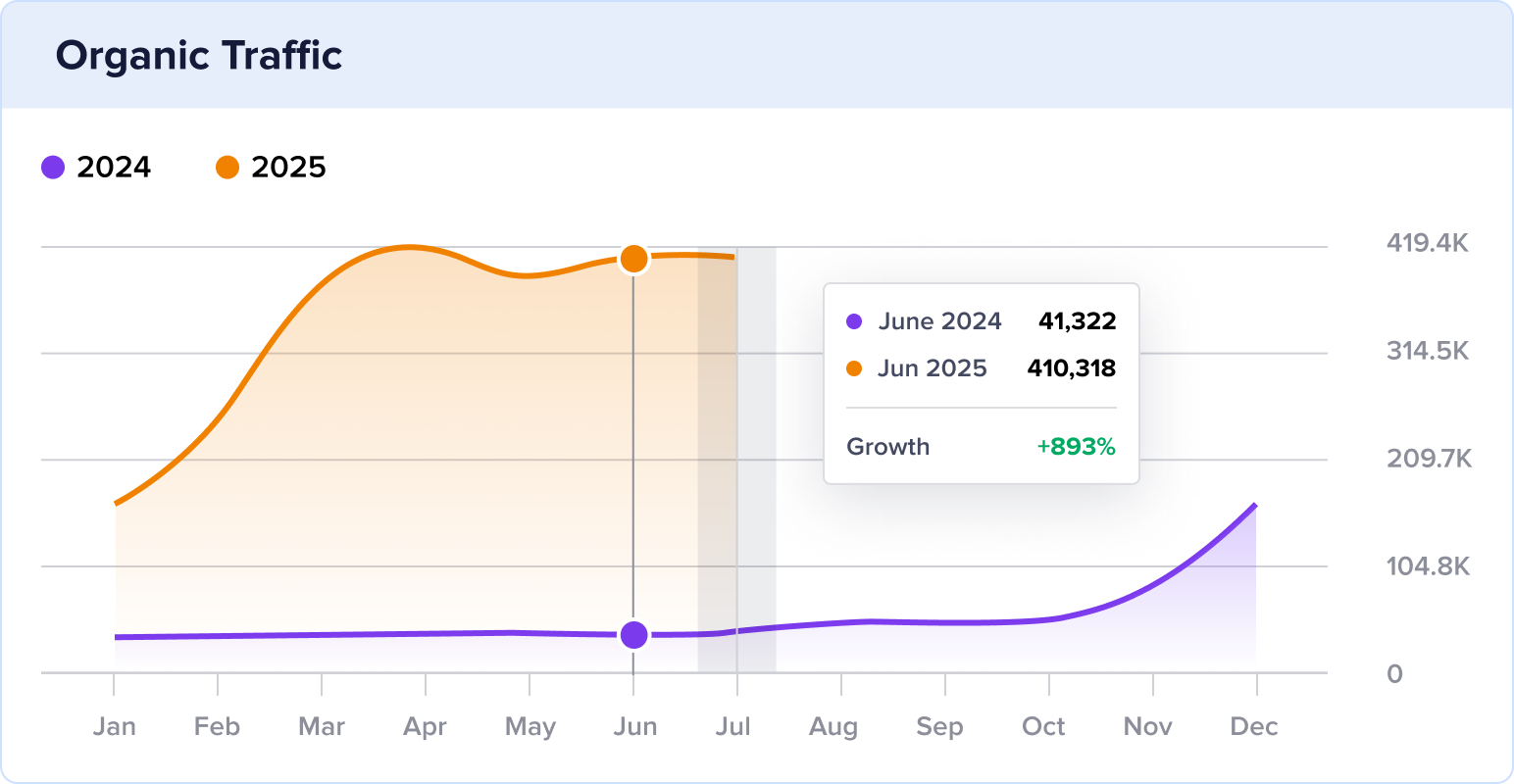How a New Jersey Mall Grew Site Traffic by 10,662% in 3 Months
https://www.marketfairshoppes.com/
Stats
8.6K to 920.4K Monthly Visits
Industry
Ecommerce & Retail
Niche
Shopping Center
Reporting Date
May 2024
MarketFair is a popular shopping and dining center in Princeton, New Jersey.
Recently, its website saw a massive increase in organic traffic, catapulting monthly visits from 8.6K to 920.4K.
Even more impressive than this growth is how quickly it occurred—just 3 months.
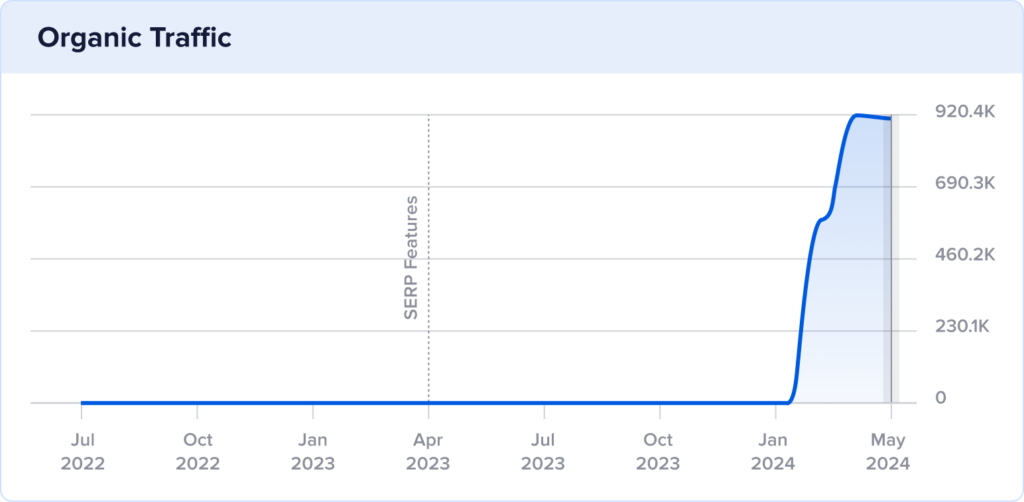
This SEO case study reveals the strategies behind MarketFair’s extraordinary growth.
Plus, you'll get tools and tutorials for replicating their wins on your website.
In This Article
The Catalyst: How MarketFair Went From 8.6K to 920.4K Monthly Visits
1. Introducing an Online Shopping Platform
In December 2020, Centennial, a real estate investment firm, acquired Market Fair.
This acquisition aligned with Centennial's plan to introduce an online shopping platform across all its properties.
The platform, named Shop Now!, allows online customers to browse in-store inventory, enhancing the overall shopping experience.

Users can see which items are in stock at MarketFair, allowing them to plan their in-store shopping.
Conversely, if they prefer to shop online, users can click Visit retailer’s website to purchase directly from the retailer via an affiliate link.

Shop Now! was implemented gradually across Centennial properties, with MarketFair being one of the most recent recipients of this innovative addition.
March 2024 marked the beginning of its rollout, with pages jumping from 58 to 154K URLs by April.
This amount doubled the following month.
In May 2024, MarketFair boasts 304K pages on its website.
Only 68 of these URLs are outside the Shop Now! platform, showcasing just how significant this program has been on MarketFair’s web presence.
As a result, keywords have skyrocketed.
MarketFair went from a mere 1.3K rankings at the beginning of the year to 801.8K in May.
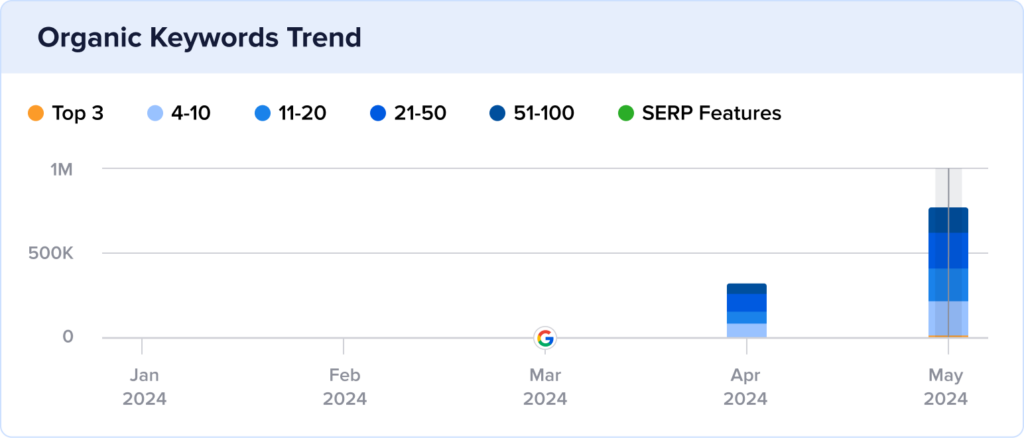
Further reading: Want to see how the Shop Now! platform affected another Centennial property’s traffic? Our Hawthorn SEO case study explores how its implementation grew organic traffic to over a quarter-million monthly visits in just a few months.
Why this matters:
Implementing the Shop Now! platform has led to a significant boost in MarketFair's online visibility.
Keyword rankings went from practically non-existent to trending toward 1 million rankings.
This incredible growth underlines the importance of an SEO content strategy to enhance discoverability.
The more content you have, the better your chances of new customers finding you.
How to develop an SEO content strategy:
MarketFair’s content strategy was straightforward. It built an online product catalog based on its inventory.
For eCommerce owners, you, too, can follow this strategy.
However, if you have a different website, like a blog or review site, you’ve got to be a little more creative.
Follow these steps to develop a content strategy that boosts rankings:
- Know your target audience.
- Perform keyword research.
- Understand search intent.
- Create topic clusters.
- Identify the best content type for the keyword.
- Write and publish a high-quality piece of content.
- Monitor SEO performance.
Tools for monitoring SEO performance:
The final step of a strong content strategy requires ongoing SEO performance tracking. After all, to see the fruits of your efforts, you need to be able to measure it.
All in One SEO (AIOSEO) is a WordPress plugin that can help you do this effortlessly.
The Search Statistics tool helps you track keyword rankings and SEO performance all from one place.
The dashboard gives you a quick overview of key performance indicators (KPIs). You’ll see SEO Statistics, Keyword Positions, Keyword Rankings, and more.

Open any of these reports to get an in-depth view of your content’s performance.
Now, let’s see how the Shop Now! platform not only increased the number of keyword rankings but also changed the type of traffic MarketFair received.
2. Shop Now! Unlocks Non-Branded Traffic
Before the launch of Shop Now!, MarketFair’s traffic was dominated by branded keywords.
As its name suggests, branded keywords include a brand or product name.
For example, “apple phone” or “iphone.”
You also have non-branded keywords, which are not tied to any specific brand.
For example, “mobile phone” or “cell phone.”
MarketFair used to generate traffic based on branded keywords alone.
In fact, at the beginning of the year, branded traffic was at 94%.
This means almost all traffic came from searches with “marketfair” or some variation of it.
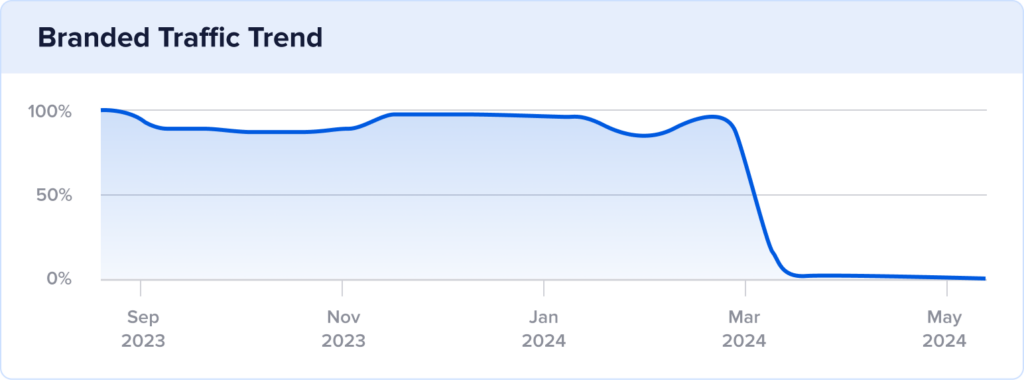
However, when Shop Now! went live on the website in March, we saw a dramatic drop in branded traffic.
By May, branded keywords accounted for only 1% of traffic.
This graph shows just how many keywords fell into each type of traffic.

Why this matters:
Branded keywords are only as strong as your brand awareness.
After all, people need to know who you are to be able to search for you.
So, for big-name brands like Apple, Nike, or McDonald’s, branded keywords generate significant traffic.
But for small businesses, branded traffic can limit your reach.
That’s why optimizing your website for non-branded keywords is critical.
Non-branded keywords will help users find your website, which is the #1 step for introducing your brand to new customers.
How to find and rank for non-branded keywords:
Keyword research will help you identify non-branded keywords for your website.
And since non-branded keywords are pretty straightforward, they’re easy to find. Just look for keywords that aren’t associated with a brand.
Here are a few steps to get you started:
- Pick a keyword research tool. (For small business owners, I highly recommend LowFruits. It helps you find low-competition keywords that are easy to rank for. Plus, they have higher conversion rates, which translates to more sales.)
- Curate a list of non-branded keywords.
- Decipher search intent
- Implement them into your SEO content strategy.
- Write the best piece of content.
Tools for keyword research:
Did you know that you can perform keyword research in WordPress?
AIOSEO makes it easy to find keywords by connecting to your Semrush account.
When you’re editing a post or page, just click Get Additional Keyphrases.
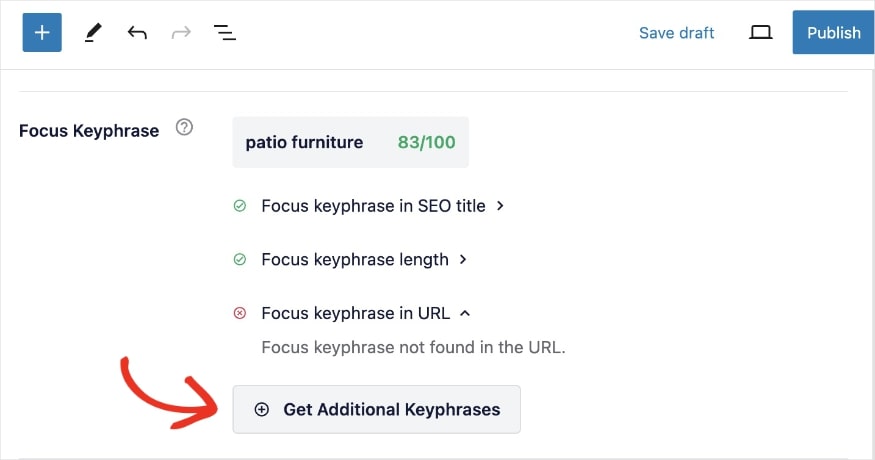
Then, you’ll get a list of keyword ideas from Semrush that are related to your focus keyphrase.
You can add these to your post or page, and TruSEO will check your optimizations for them.
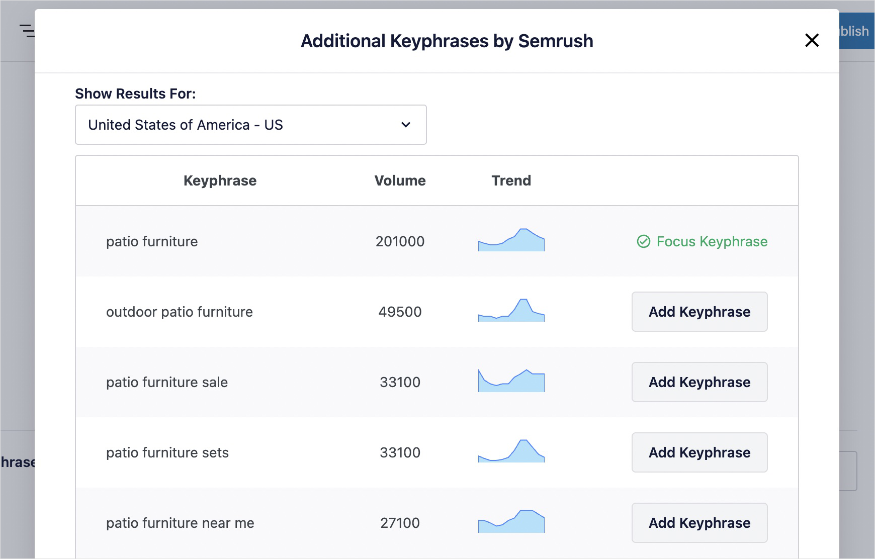
Next, let’s see how MarketFair’s new product catalog helped it stand out on the search engine results page (SERP).
3. Image Rich Results Get More Clicks
Multimedia is a powerful way to engage users with your content.
And for eCommerce, images are a must-have to showcase products.
Each of MarketFair’s product detail pages includes a high-quality image of the product.
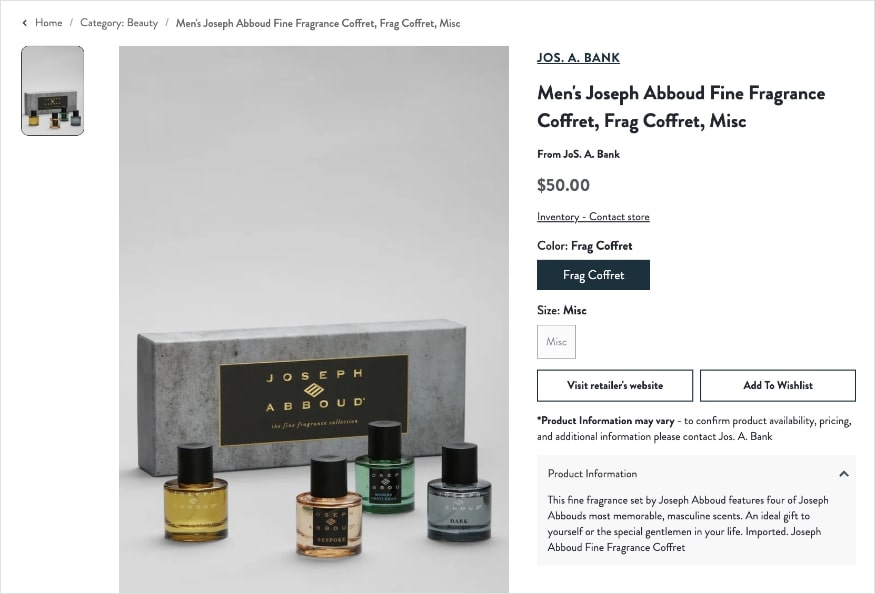
Behind the scenes, MarketFair uses a few image SEO strategies to make sure search engines can understand their images.
Search engines can’t “see” images like you and me.
Instead, they rely on text signals to decipher their content.
Some ways to communicate your images’ content is through the following items:
- Descriptive alt text that explains your image.
- Image filenames that contain your primary keyword.
- Image titles and captions to provide further context.
- Schema markup that makes it easy for search engines to understand your web page and images.
This last point is particularly important for getting rich snippets on the SERP.
Schema markup provides search engines with additional information about your website's content. It uses specific tags that help search engines understand and categorize your web pages.
Search engines can then use this information to generate rich results, which are more appealing to users.
Rich snippets, like the one below, feature additional elements like the image, price, and stock availability.

In 2024, MarketFair increased its image rich results by an unprecedented amount. They started the year with about 100 rankings, and in May, they had almost a quarter-million image snippets.
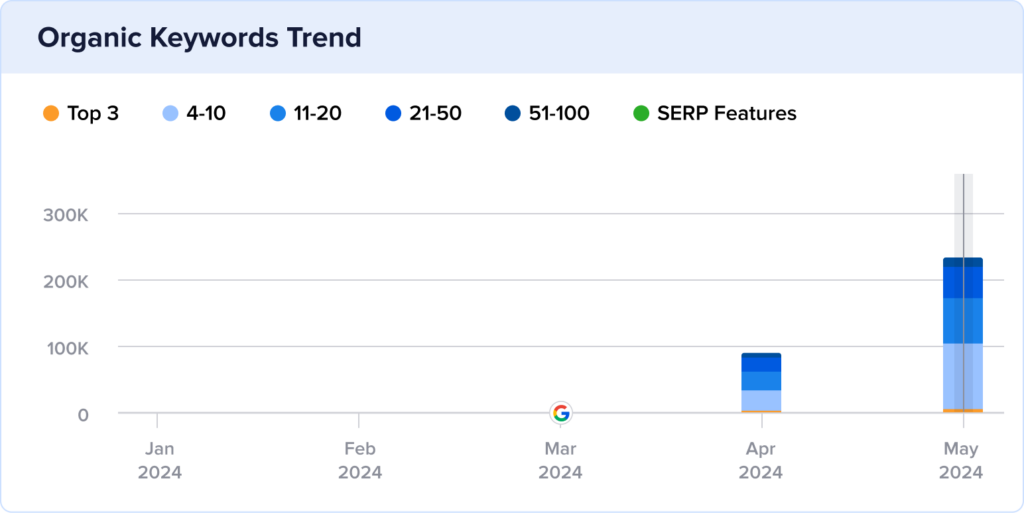
Why this matters:
According to SEO statistics, rich results get 58% of all clicks.
This is significantly higher than non-rich results, which have a 42% clickthrough rate (CTR).
Image SEO isn’t just about having pictures; it’s about getting noticed.
Rich results with images are a powerful way of getting users to stop scrolling and click your link.
How to do image SEO:
This tutorial has 18 ways to optimize your images.
In addition to the steps mentioned earlier (alt text, captions, etc.), you should also do the following:
- Compress the file size for faster loading.
- Use responsive images for a positive user experience (UX) regardless of device.
- Create an image sitemap.
- Implement image structured data.
Tools for rich results:
Win more rich results with AIOSEO’s Image SEO tool and Schema Generator.
The Image SEO feature allows you to automate important image optimizations using smart tags. This generates image elements like titles, alt text, and captions.
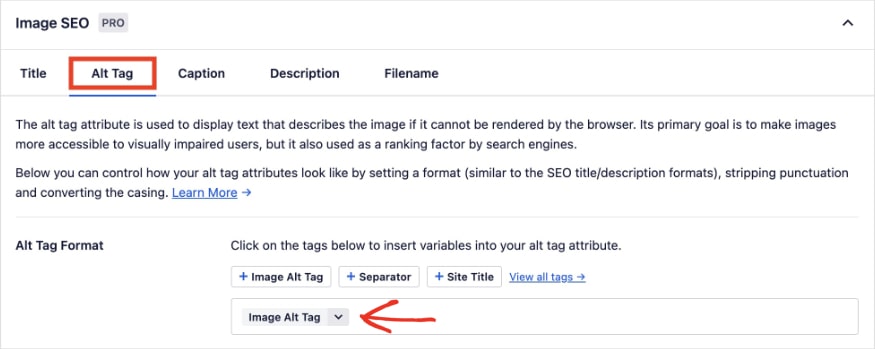
You can also use the Schema Generator to add product schema markup.
Just select Product from the list of available schemas, and the tool will guide you through setting product details.
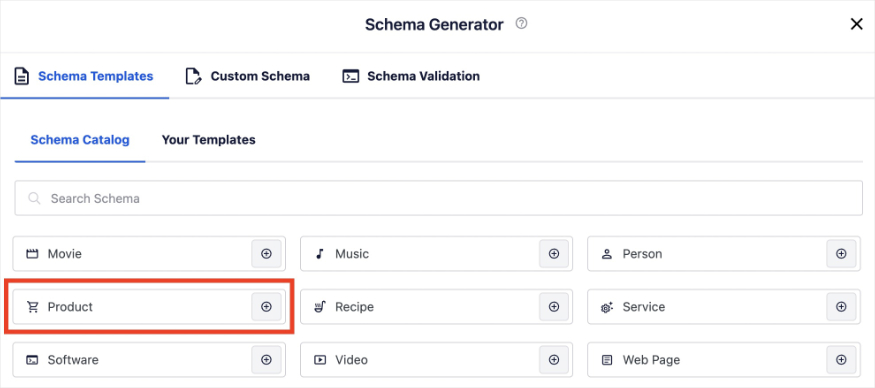
You’ll also be able to upload an image, encouraging search engines to generate rich results like MarketFair.

Standout SEO Wins
In addition to the positive outcomes discussed above, MarketFair has another SEO win: knowledge panels.
Knowledge Panels Capture Branded Traffic
Remember those branded keywords we discussed earlier?
They’re still vital to creating a strong online presence, especially for loyal customers who know your business by name.
For many of MarketFair’s branded searches, they have a knowledge panel on the SERP.
Knowledge panels appear on the right side of search results. They provide a quick overview of key information for people, places, organizations, or things.

For MarketFair, they acquired several rankings with this type of rich result in May.
The screenshot below shows some of their highest-traffic branded keywords with knowledge panels (designated by the cap icon under Position).

While knowledge panels are common for established retailers like MarketFair, they're also important for small businesses.
They help you build brand recognition and credibility, establishing a trustworthy online presence.
Tool: While there's no guaranteed way to attain a knowledge panel, employing best practices is key.
Clear and consistent communication of business details, known as NAP in SEO (name, address, phone number), is crucial.
This is especially true for local SEO.
This principle emphasizes maintaining uniform business information across all online accounts. For example, your website, Google Business Profile, and social media accounts should all have the same details.
AIOSEO can help you set up Knowledge Graph data, ensuring accurate business details that are easily understood by search engines.
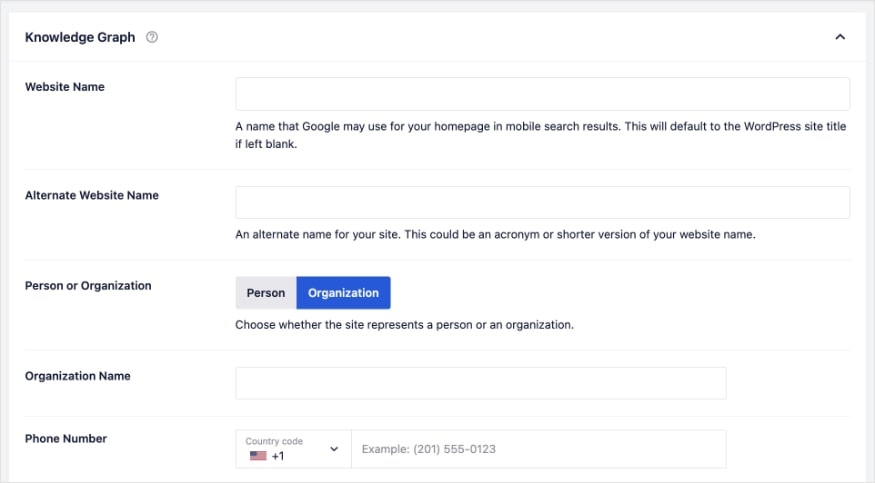
Takeaways
In our analysis of MarketFair’s growth journey, we’ve uncovered the key strategies to their success.
Now, let’s recap how you can make these strategies work for you and others to reconsider.
Top 3 Strategies to Emulate
- Develop a content strategy and publish fresh content. MarketFair's success highlights the importance of a strong content strategy. Regularly publish fresh, high-quality content that caters to your target audience. This keeps your website engaging and provides valuable information that attracts your ideal customer.
- Target non-branded keywords to boost discoverability. Don't limit yourself to just branded keywords. MarketFair's focus on non-branded keywords helped them reach a wider audience. Research relevant keywords that people are searching for and use them strategically throughout your content. This increases the chances of your website appearing in searches, boosts brand awareness, and drives organic traffic.
- Optimize your content for rich snippets. MarketFair's increase in image rich results showcases the power of optimizing for search engines. Implementing strategies like descriptive alt text and schema markup can help search engines better understand your content. This can improve your search rankings while creating visually appealing rich snippets that win more clicks.
Bottom 3 Strategies to Reconsider
- Neglecting image filenames. Don't miss free SEO opportunities like image filenames. Instead of generic names like “IMG_0001.jpg,” use descriptive filenames rich in relevant keywords. For example, “blue-cotton-t-shirt.jpg.” This helps search engines understand your images and potentially improve your rankings. An image SEO plugin can make these optimizations automatically for you.
- Forgetting to add internal links. Internal links connect your website's content and keep users engaged. It also helps search engines understand your website structure and the hierarchy of your content. Strategically link relevant pages within your website to guide users on a discovery journey and improve their overall experience. Link Assistant makes this process more efficient by suggesting related content in the WordPress editor.
- Exceeding meta description character limits. Meta descriptions appear in search results and give a preview of your content. While exceeding the character limit won't get you penalized, it's a less-than-ideal UX. Search engines will truncate your description, potentially cutting off important information. Instead, check your meta descriptions in a SERP snippet tool to ensure they're under 160 characters.
Steal Our Winning SEO Strategy: A Checklist for Your Website
Download A Free SEO Checklist
Access our comprehensive SEO Checklist with a single click. We'll deliver it straight to you, putting actionable items with SEO tools and tutorials right at your fingertips.
Enter your name and email to download a free SEO checklist.
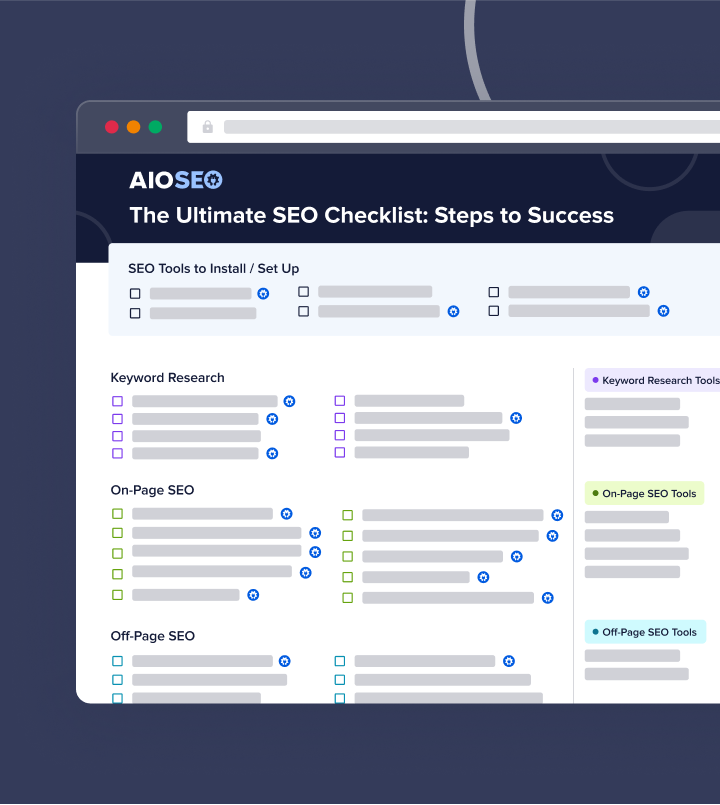
Boost Brand Awareness and Organic Traffic With AIOSEO
MarketFair's success story is a powerful testament to the impact of strategic SEO.
But replicating their success doesn't have to be an overwhelming guessing game for DIY SEOs.
AIOSEO can help you achieve similar winning results and lighten the load of SEO implementation.
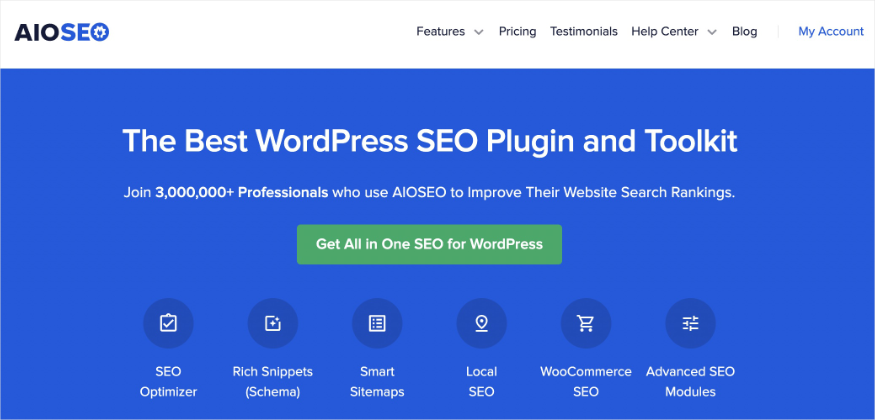
With thousands of 5-star reviews and trusted by over 3 million website owners, you’ll be in good company as you take on the SERP. You’ll get access to a powerful SEO tool kit that makes optimizing your website for search engines easy.
Plus, they’re beginner-friendly, meaning you don’t need a background in SEO to see results.
Here are some of our favorite features:
- Search Statistics: Track your website’s organic performance with comprehensive and easy-to-understand reports. Search Statistics helps you monitor keyword rankings and understand the effectiveness of your SEO over time.
- Semrush Keyphrase Suggestions: Perform keyword research directly in the WordPress editor. AIOSEO connects with your Semrush account to generate related keyword ideas for your content.
- TruSEO Score: Level up your content and go beyond a simple pass or fail. TruSEO analyzes your on-page SEO, giving you actionable insights to maximize your content's reach.
- Image SEO: Turn on automatic image alt text and title attributes with a single click. You’ll save time from manual entries while helping users and search engines understand your images.
- Rich Snippets Schema: Win more rich results with AIOSEO’s user-friendly schema generator. Just pick the schema type you want, and we’ll format the structured data properly for Google.
- Local SEO: Our local SEO tool implements local business schema for you—no coding required. We'll also help you format your local SEO settings to boost your visibility in local searches and rank higher in Google Maps.

